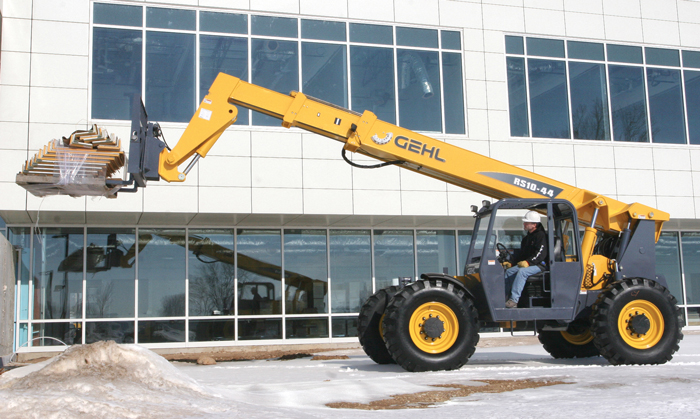Telescopic Handlers

One of the most important things an owner of compact telescopic handlers
can do to prepare for cold weather operation of their equipment is to
establish good maintenance practices during the warm weather. Following
the recommended maintenance schedule is important in both warm and cold
operating environments; however, cold temperatures place additional
demands on components and their respective lubricants, fluids, fuel,
seals and rubber parts.
Cold weather brings snow and ice which must be removed and kept clear
from windows, steps, lights and controls if they are exposed to the
elements before the machine can be operated safely. Cold weather also
changes traction and weight capacity of soils and surfaces where
machines operate, requiring additional consideration and operator
adjustments. Cold weather and shorter daylight work hours also reduce
the likelihood preventative maintenance will be performed. Establishing a
weekly maintenance procedure, amending to address cold weather concerns
and keeping with it in cold weather is very important to keep equipment
in top operating condition.
When preparing compact telehandlers for extended use in cold weather,
the owner should review the operator’s manual for cold temperature
recommended fluids. Some units may recommend different axle oil for cold
weather operation. If suggested oil is not listed in the operator’s
manual, owners can contact their local dealer for OEM recommendations.
In addition to axle oil, the hydraulic oil may need to be replaced for
extended cold weather operation. Typical hydraulic oils will have a
temperature range for anticipated operation. Hydraulic oil which matches
the anticipated operation conditions of the compact telehandler should
be used. This oil should be approved for use by the manufacturer of the
telehandler. The engine coolant fluid should be checked to ensure proper
freeze protection. Also the condition of the engine block heater and
other supplemental heaters should be checked for correct operation and
overall condition. Window washer fluid should be replaced with fluid
designed to the device and provide freeze protection to the pump and
reservoir.
Some telescopic handlers require water ballast in their tires for
stability. This ballast is generally a saltwater solution to avoid
freezing in cold temperatures and to increase the weight of the
solution. It is important that the specific gravity of the solution is
correct along with the fluid volume. Prior to cold weather operation,
the heater and defrost system for the machine should be checked. This
includes testing the system to make sure it is operating correctly. The
wipers should be inspected and replaced. The door and window seals in
the operator’s compartment should be inspected and replaced if damaged.
Work lights should also be inspected and repaired if needed. Checking
the battery condition and that it’s charged is also a good practice
prior to cold weather operation.
Operators should follow the manufacturer’s recommendations for cold
weather engine operation as listed in the operator’s manual. Typically
allowing the engine to run for five minutes or more will allow time for
the engine and hydraulic fluids to warm before operation of the
telescopic handler. Depending on the weather conditions, this time may
need to be increased.
Cold weather also creates unique challenges to materials needed to be
handled and their respective landed or point-of-use locations. The
various hazards created by cold weather combined with snow and ice are
too numerous to list here but it is accurate to say, ample time, tools
and materials should be applied to assure the special hazards created by
cold weather are adequately addressed.
Steve Kiskunas is a product manager for telescopic handlers with Manitou Americas, based in West Bend, Wis.
